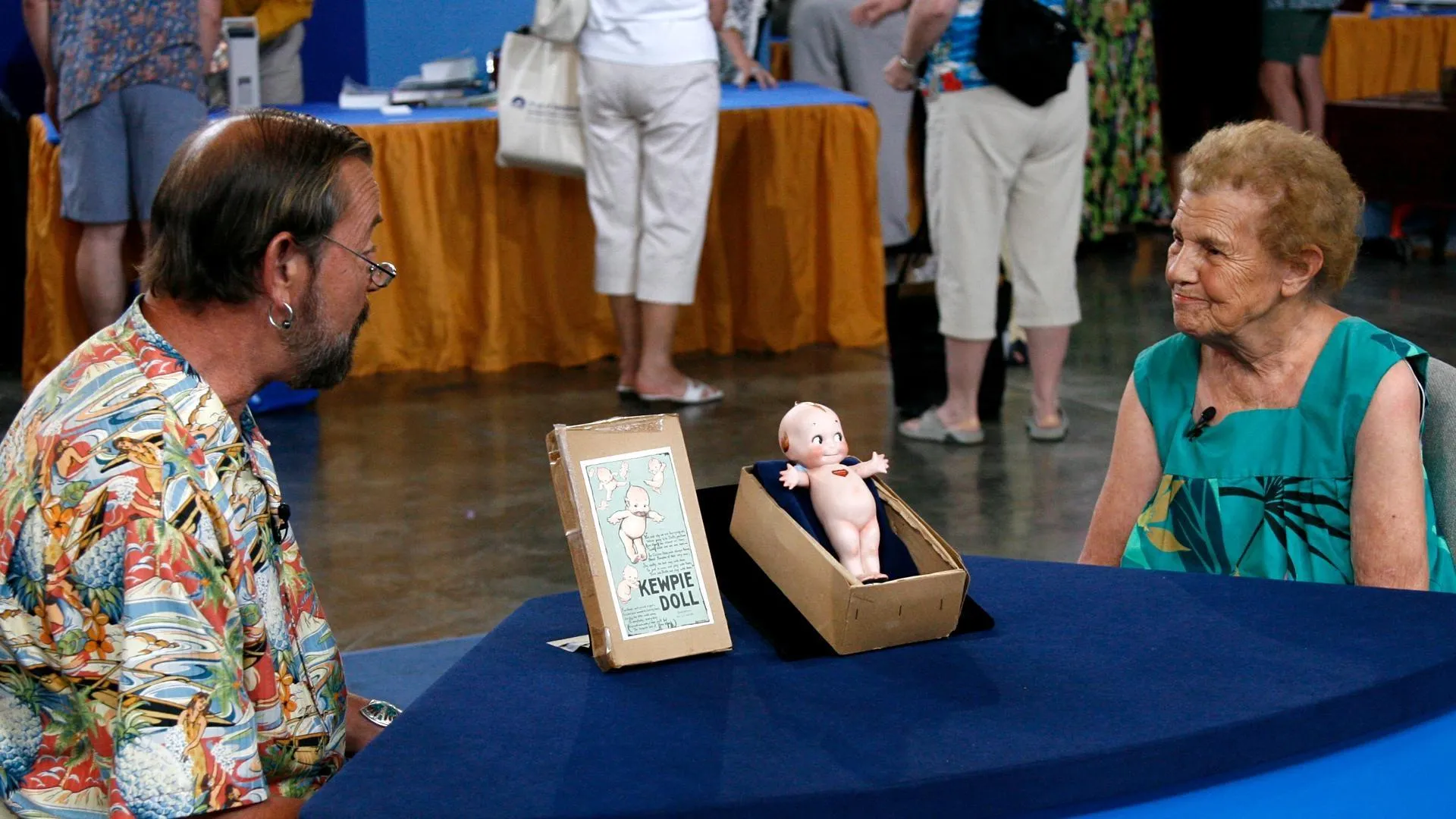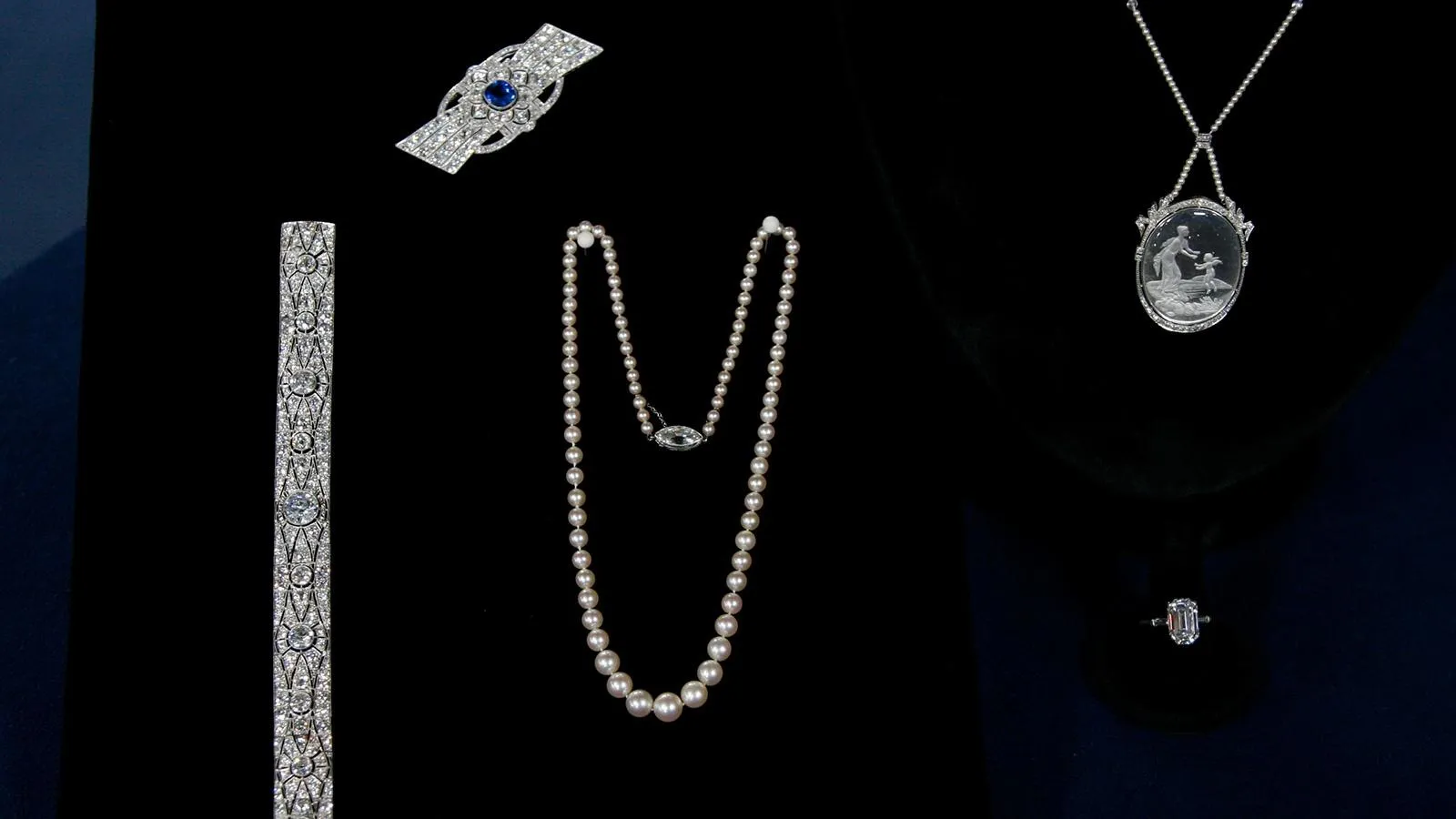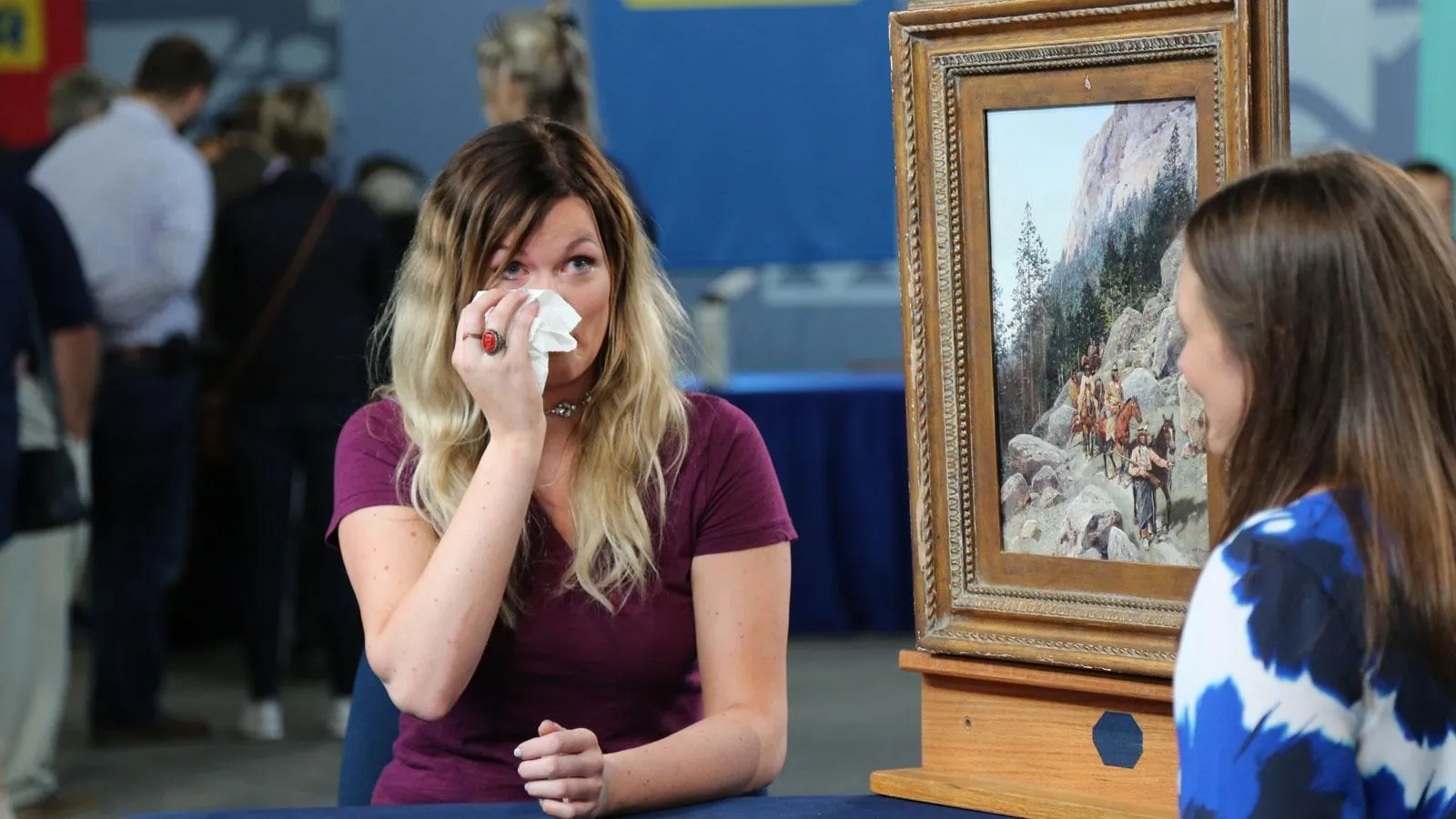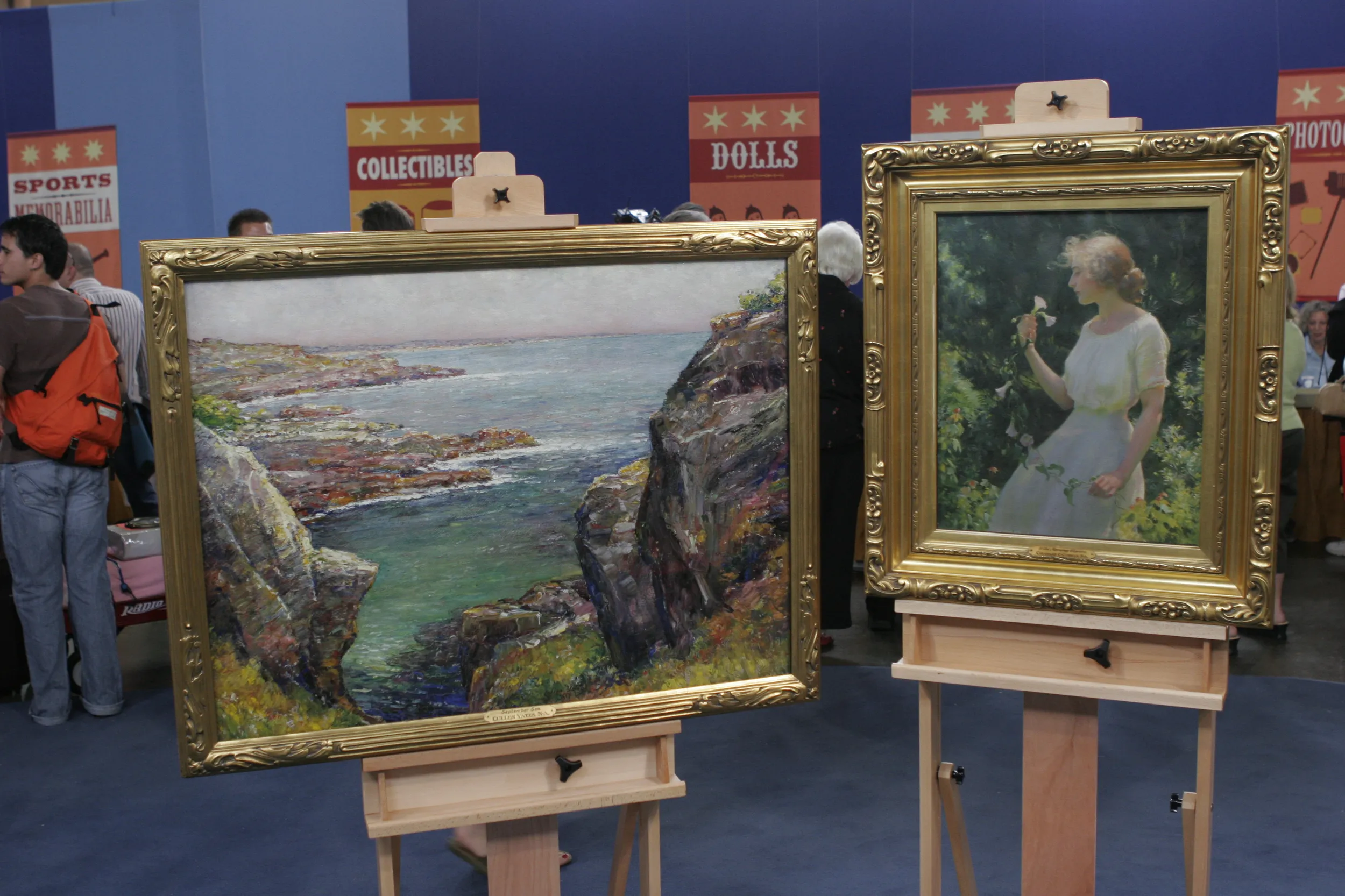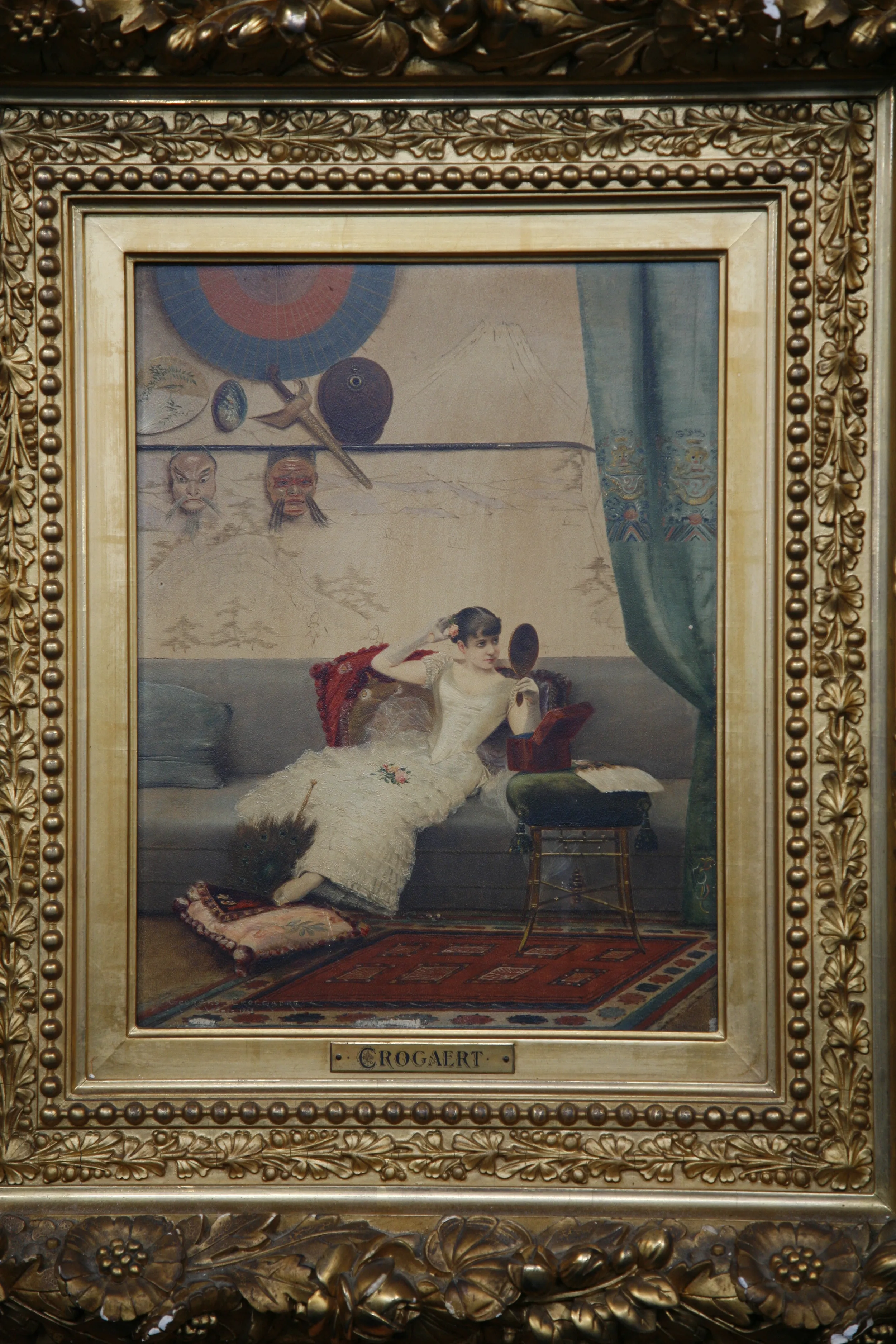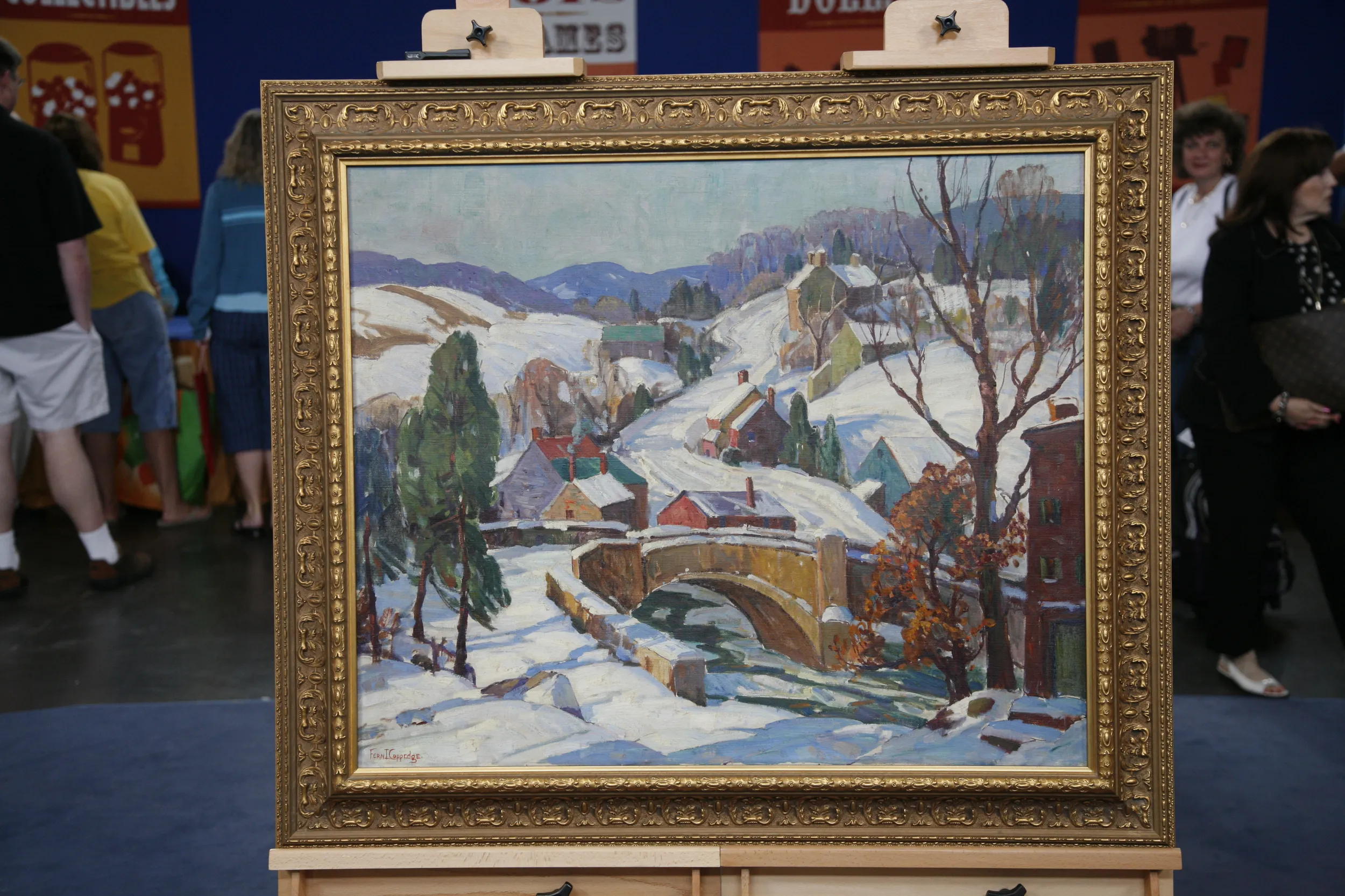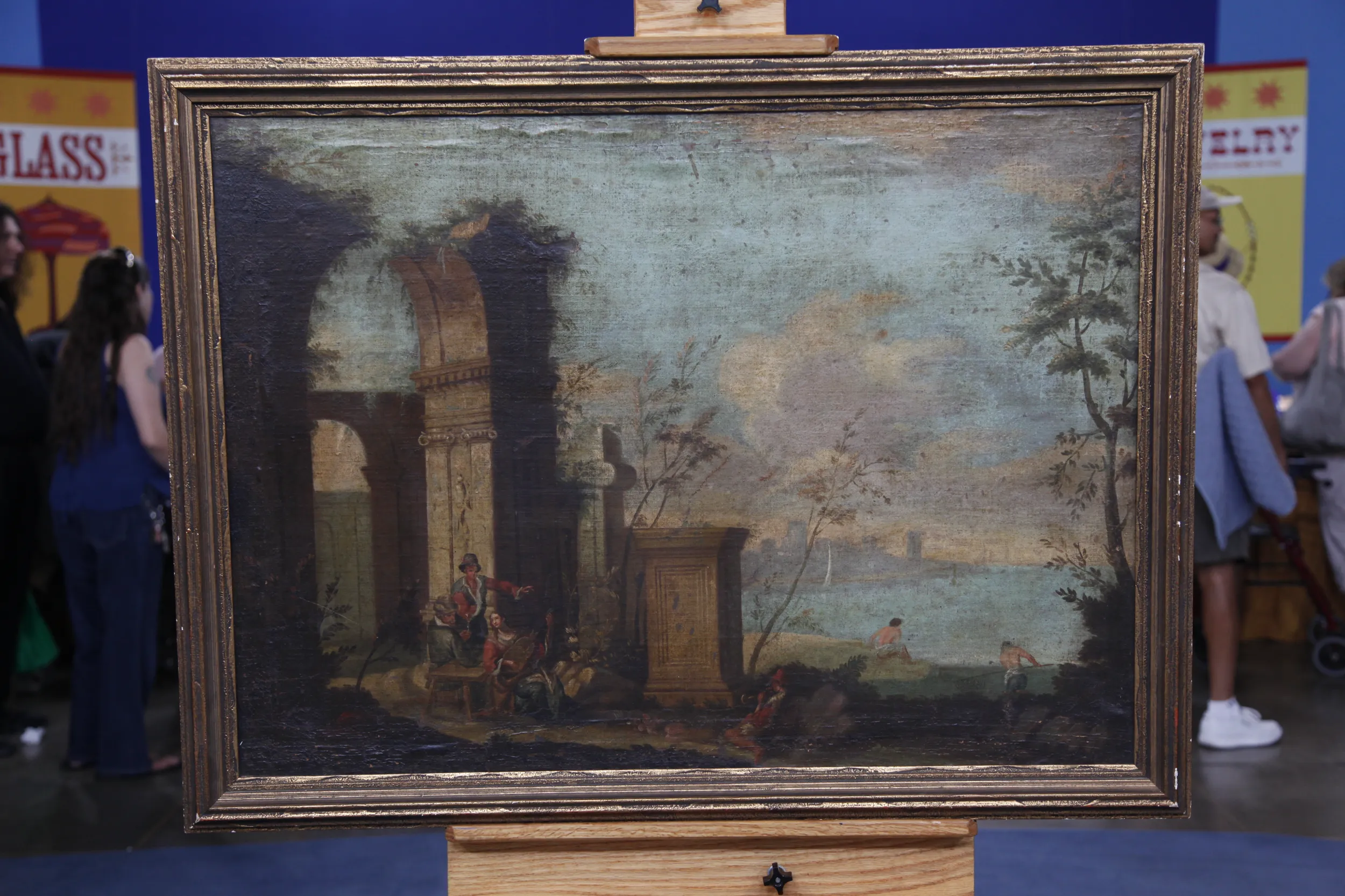APPRAISER: It's signed down here, J. Nawahi, 1888. Joseph Nawahi, he wasn't primarily a painter, was he?
GUEST: No, that's probably the least of his known attributes. He was a lawyer, he was a legislator, he was an educator, and he was the publisher of a newspaper.
APPRAISER: He was in the legislature for 20 years. He produced a newspaper critical of the rebellion and the overthrow of the government, and actually landed in jail from around 1893, '95, and subsequently caught tuberculosis and died in '96.
GUEST: Yes.
APPRAISER: But he was native-born Hawaiian. We see these two snow-capped peaks here.
GUEST: Uh-huh.
APPRAISER: And those are...
GUEST: They're the two mountains on the Big Island.
APPRAISER: Right.
GUEST: They're Mauna Kea and Mauna Loa. Right, it's volcanoes there.
APPRAISER: Right. This bay here is, is probably where?
GUEST: It's the Hilo Bay.
APPRAISER: On the Big Island.
GUEST: Right.
APPRAISER: And then this island there?
GUEST: It's called Coconut Island.
APPRAISER: He was an amateur painter, and if you look at the figures, sometimes the anatomy and the perspective isn't always right. They're a little bit stiff. He's a good artist, but not a great artist. He has a good sense of the, the landscape, but he's not an academically trained artist.
GUEST: Yeah.
APPRAISER: He had some training, but not much. But it's important because he's the first Hawaiian-born to paint in this Western style. He was known for doing volcanoes, much like Jules Tavernier. There aren't many paintings by him. I think he-- how many are there?
GUEST: There are... We only know of five. This is either the largest or one of the two largest ones.
APPRAISER: Where'd you get it?
GUEST: Well, we were on our way from our property up in Volcano down to Hilo Town to go to a museum, and we stopped on the way at our favorite antiques gallery, saw this, couldn't quite make out the artist's name, but got a fix on it, and we had to rush off. So we went down to the museum and we saw his name there. My husband and I, we looked at each other and we said, "The painting!" And called the antique shop and asked them to hold it, and we zoomed back up there and we got the painting. I think we paid about $400 for it.
APPRAISER: About $400.
GUEST: That was in the '70s. It was very dark and it was grazed. The old painting had cracked and everything. So a friend of ours sent it to his restorer in San Francisco, I think it was. It was somewhere in California. And so we did have him do that.
APPRAISER: That has an effect on, on value on anything. But when you're talking about five or six pieces that are known...
GUEST: Uh-huh.
APPRAISER: We sort of forgive some of the condition issues. Do you remember what you paid for the restoration?
GUEST: Probably between $600 and $900.
APPRAISER: I consulted with one of my colleagues here who is from the islands. Because you have the Hilo Bay, you have Mauna Loa, Mauna Kea, he called it Hawaiian gold for, in, in the art market.
GUEST: Mmm.
APPRAISER: Recently, works by him have sold as much as $70,000. I think, if this were to be up at auction today, I would probably put an estimate of $100,000 to $150,000 on it.
GUEST: Are you kidding?
APPRAISER: No, it's a great thing.
GUEST: (laughing) Wow. Wow.
APPRAISER: It's, it's really important. This is a national treasure.
GUEST: Yeah. Yeah.
APPRAISER: I mean, it's an amazing thing to have here.
GUEST: Well, I'm Native Hawaiian.
APPRAISER: This is... Yeah.
GUEST: So it's one of the reasons we bought it.
APPRAISER: Oh, it's great.
GUEST: Oh, gosh. (laughs) I've got goose skins. Yeah.
APPRAISER: Well, take good care of it, you know? And put it in a very safe place.
GUEST: Mm-hmm.
APPRAISER: And keep it under lock and key. (chuckles)
GUEST: (voice trembling) Excuse me.
APPRAISER: It's all right.
GUEST: We're very proud to have this picture.
APPRAISER: Yeah.
GUEST: Thank you so much.
APPRAISER: All right. Well, thanks for bringing it in-- it made my day.
GUEST: (laughing) Thank you.

